Bag Carrots Growing Tips: Ever dreamt of pulling perfectly formed, vibrant carrots straight from your own backyard? I know I have! There’s something incredibly satisfying about nurturing your own food, and carrots are surprisingly easy to grow, even if you’re short on space or time. Forget those bland, store-bought carrots – imagine the sweet, crisp flavor of homegrown goodness!
Carrots have a rich history, dating back thousands of years. Originally cultivated for their aromatic leaves and seeds, the vibrant orange root we know and love today is a relatively modern development. Over centuries, selective breeding transformed the carrot into the sweet and nutritious vegetable we enjoy in salads, soups, and as a healthy snack.
But let’s face it, getting those perfect carrots can sometimes feel like a challenge. That’s where these bag carrots growing tips come in handy! Many gardeners struggle with poor germination, stunted growth, or misshapen roots. This DIY guide is packed with simple, effective hacks to help you overcome these common hurdles and achieve a bountiful carrot harvest. I’ll share my secrets for creating the ideal growing environment, from choosing the right soil to mastering watering techniques. So, grab your gardening gloves, and let’s get started on your journey to carrot-growing success!
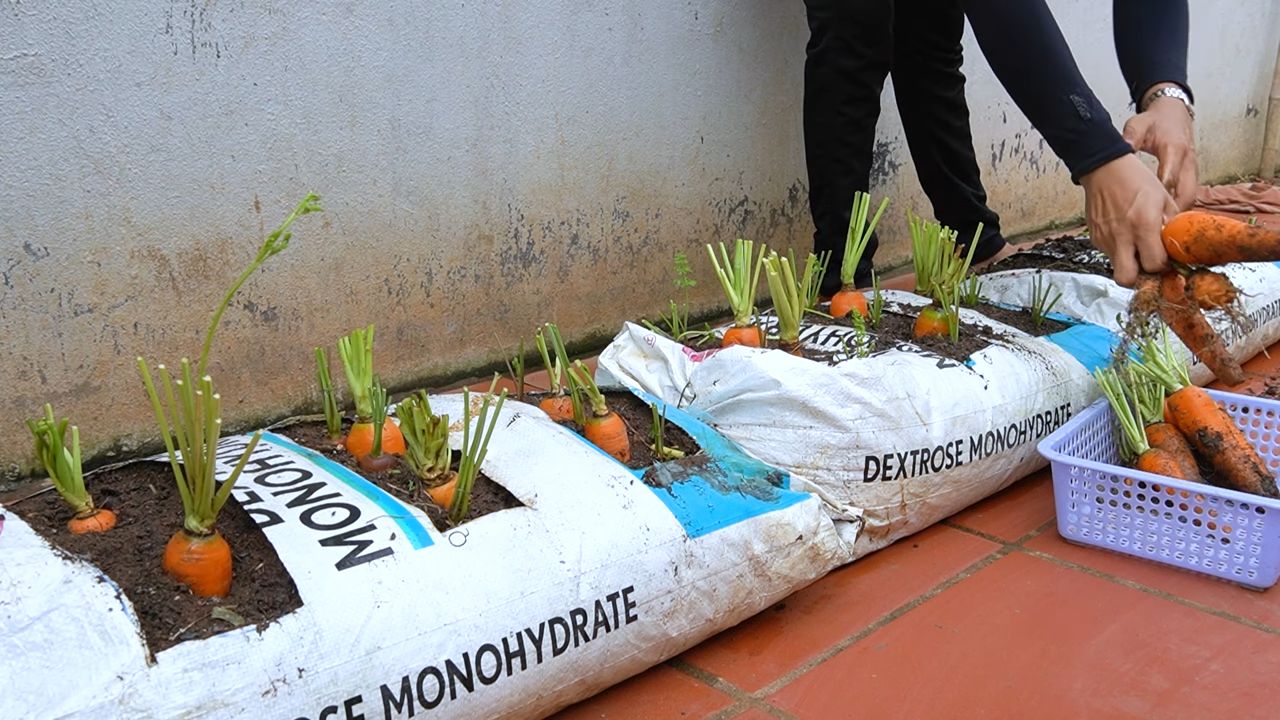
Growing Carrots in a Bag: A Beginner’s Guide
Hey there, fellow gardening enthusiasts! Ever thought about growing carrots but felt limited by space or soil conditions? Well, I’m here to tell you that you can absolutely grow delicious, crunchy carrots in a bag! It’s a fun, easy, and surprisingly productive method, perfect for balconies, patios, or even just a sunny corner indoors. Let’s dive into how you can get started.
Choosing the Right Bag and Carrot Variety
Before we get our hands dirty, let’s talk about the essentials. The right bag and carrot variety are crucial for success.
* Bag Selection: You’ll need a sturdy bag that can hold soil and withstand the elements.
* Size Matters: Aim for a bag that’s at least 12 inches in diameter and 12 inches deep. The deeper the bag, the longer your carrots can grow. I’ve had great success with 15-gallon grow bags, but even a large, heavy-duty trash bag will work in a pinch (just make sure to poke drainage holes!).
* Material: Fabric grow bags are fantastic because they allow for good drainage and aeration. Plastic bags are okay, but drainage is even more critical.
* Color: Dark-colored bags absorb more heat, which can be beneficial in cooler climates but detrimental in hotter ones. Consider a lighter-colored bag if you live in a warm area.
* Carrot Variety: Not all carrots are created equal, especially when it comes to container gardening.
* Short and Sweet: Look for shorter, rounder varieties like ‘Thumbelina,’ ‘Paris Market,’ or ‘Little Finger.’ These are ideal for growing in containers because they don’t need as much depth.
* Consider the Climate: Choose a variety that’s well-suited to your local climate. Seed packets usually provide this information.
* Heirloom vs. Hybrid: Both heirloom and hybrid varieties can be grown in bags. Heirloom varieties are open-pollinated and have been passed down through generations, while hybrid varieties are bred for specific traits like disease resistance or uniform size.
Preparing Your Bag and Soil
Now that we’ve got our bag and seeds, let’s get ready to plant!
* Drainage is Key: Carrots hate soggy soil, so drainage is paramount.
* Poke Holes: If you’re using a plastic bag, poke plenty of drainage holes in the bottom. I usually aim for at least 10-12 holes.
* Gravel Layer (Optional): You can add a layer of gravel or small stones to the bottom of the bag to further improve drainage, but it’s not always necessary.
* Choosing the Right Soil: Carrots need loose, well-draining soil to thrive.
* Avoid Heavy Clay: Heavy clay soil will compact and make it difficult for carrots to grow.
* Potting Mix is Your Friend: A good quality potting mix is ideal. It’s lightweight, well-draining, and usually contains some nutrients.
* DIY Soil Mix: You can also create your own soil mix by combining equal parts potting mix, compost, and perlite or vermiculite. The compost provides nutrients, while the perlite or vermiculite improves drainage and aeration.
* Remove Rocks and Debris: Make sure to remove any rocks, sticks, or other debris from the soil. Carrots need a smooth, unobstructed path to grow.
* Filling the Bag:
* Don’t Overfill: Fill the bag with soil, leaving about 2-3 inches of space at the top. This will make watering easier.
* Water Thoroughly: Once the bag is filled, water the soil thoroughly until water drains out of the bottom. This will help settle the soil and ensure that it’s evenly moist.
Planting Your Carrot Seeds
Alright, time to get those seeds in the ground (or, in this case, the bag!).
1. Moisten the Soil: Before planting, make sure the soil is evenly moist. If it’s dry, give it a good watering.
2. Sowing the Seeds: Carrot seeds are tiny, so it’s easy to sow them too thickly.
* Space Them Out: Aim for about 1/2 inch to 1 inch spacing between seeds. I like to use my fingers to create shallow furrows in the soil and then sprinkle the seeds along the furrows.
* Thinning is Important: Don’t worry if you sow them a little too thickly. You can always thin them out later.
3. Covering the Seeds:
* Lightly Cover: Cover the seeds with a thin layer of soil (about 1/4 inch).
* Gently Pat Down: Gently pat down the soil to ensure good contact between the seeds and the soil.
4. Watering After Planting:
* Gentle Watering: Water the soil gently after planting to avoid disturbing the seeds. I like to use a watering can with a rose head or a spray bottle.
* Keep it Moist: Keep the soil consistently moist until the seeds germinate.
Caring for Your Carrot Plants
Now comes the part where you nurture your little carrot seedlings into thriving plants.
1. Location, Location, Location: Carrots need plenty of sunlight to grow.
* Full Sun is Best: Aim for at least 6-8 hours of direct sunlight per day.
* Rotate the Bag: If your bag is only getting sunlight from one direction, rotate it regularly to ensure that all sides of the plants get enough light.
2. Watering: Consistent watering is crucial for carrot growth.
* Keep the Soil Moist: Keep the soil consistently moist, but not soggy.
* Check the Soil: Check the soil moisture regularly by sticking your finger into the soil. If the top inch feels dry, it’s time to water.
* Water Deeply: When you water, water deeply until water drains out of the bottom of the bag.
* Avoid Overwatering: Overwatering can lead to root rot, so be careful not to water too much.
3. Thinning: Thinning is essential for giving your carrots enough space to grow.
* When to Thin: Once the seedlings are a few inches tall, it’s time to thin them out.
* How to Thin: Gently pull out the weaker seedlings, leaving the strongest ones spaced about 2-3 inches apart.
* Don’t Waste the Thinnings: You can eat the thinnings! They’re delicious in salads.
4. Fertilizing: Carrots are relatively light feeders, but they still benefit from occasional fertilization.
* Balanced Fertilizer: Use a balanced fertilizer with equal amounts of nitrogen, phosphorus, and potassium.
* Liquid Fertilizer: Liquid fertilizers are easy to apply and are quickly absorbed by the plants.
* Follow the Instructions: Follow the instructions on the fertilizer package carefully.
* Avoid Over-Fertilizing: Over-fertilizing can lead to leggy growth and poor root development.
5. Weeding: Keep the bag free of weeds.
* Hand-Pull Weeds: Hand-pull any weeds that pop up.
* Mulch (Optional): You can add a layer of mulch to the top of the soil to help suppress weeds and retain moisture.
Dealing with Pests and Diseases
While growing carrots in a bag minimizes some pest and disease issues, it’s still good to be prepared.
* Common Pests:
* Carrot Rust Fly: The larvae of the carrot rust fly can tunnel into the roots, causing damage. Cover your bag with insect netting to prevent the flies from laying eggs.
* Aphids: Aphids are small, sap-sucking insects that can weaken plants. Spray them off with a strong stream of water or use insecticidal soap.
* Nematodes: Nematodes are microscopic worms that can damage the roots. Use a soil amendment containing beneficial nematodes to control them.
* Common Diseases:
* Leaf Blight: Leaf blight is a fungal disease that can cause spots on the leaves. Improve air circulation and avoid overhead watering to prevent it.
* Root Rot: Root rot is caused by overwatering and poor drainage. Make sure your bag has good drainage and avoid overwatering.
Harvesting Your Carrots
The moment we’ve all been waiting for – harvest time!
1. When to Harvest: Carrots are usually ready to harvest 60-80 days after planting, depending on the variety.
* Check the Seed Packet
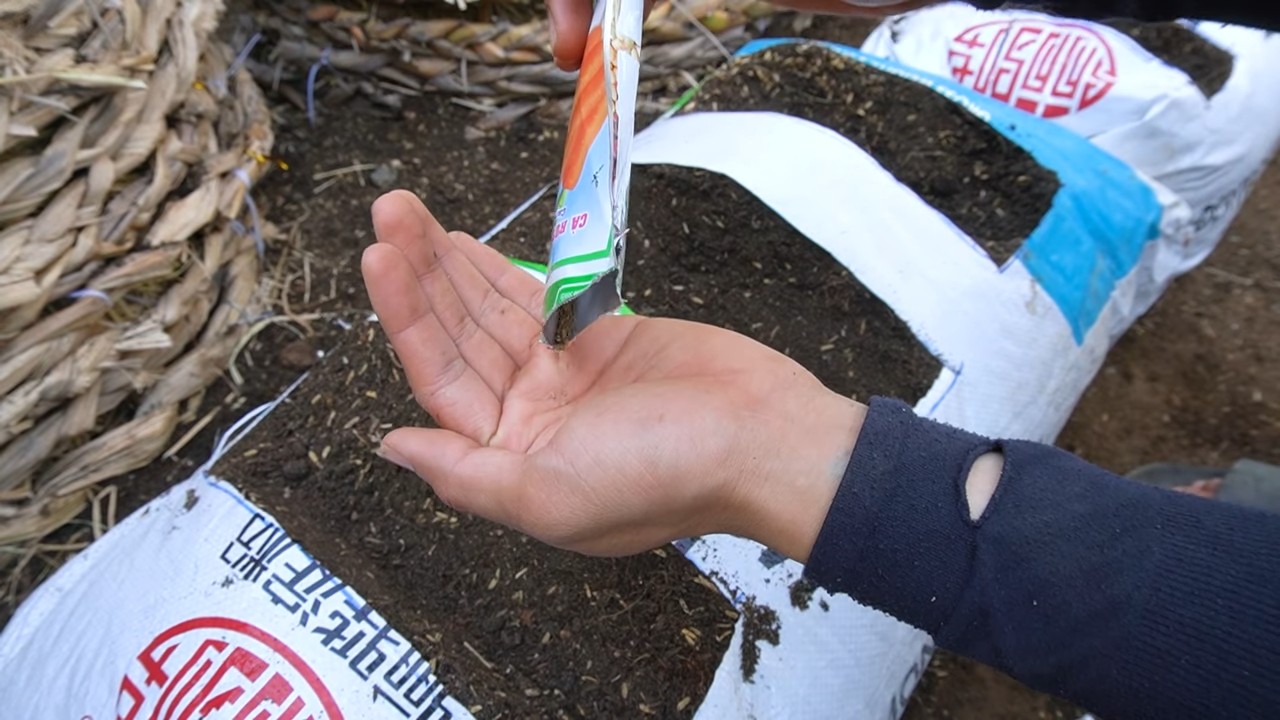
Conclusion
So, there you have it! Transforming those humble bag carrots into a thriving garden patch is not only possible, but surprisingly rewarding. We’ve walked through the simple steps, debunked common myths, and armed you with the knowledge to give these often-overlooked vegetables a second life. Why is this DIY trick a must-try? Because it’s sustainable, budget-friendly, and incredibly satisfying to watch something you might have discarded flourish into a source of fresh, homegrown goodness.
Think about it: reducing food waste, saving money on seeds, and enjoying the unparalleled taste of carrots you nurtured yourself – all from a bag of carrots you bought at the grocery store. It’s a win-win-win!
But the journey doesn’t end here. Feel free to experiment with different carrot varieties. Try planting them in raised beds for better drainage, or even in large containers if you’re short on space. Consider companion planting with herbs like rosemary or sage to deter pests and enhance the flavor of your carrots. You can also try succession planting, staggering your planting times to ensure a continuous harvest throughout the growing season.
Don’t be afraid to get your hands dirty and embrace the learning process. Gardening is all about experimentation, and even if you encounter a few hiccups along the way, the experience will be invaluable. Remember to document your progress, take pictures, and share your successes (and even your failures!) with fellow gardening enthusiasts.
We’re confident that with a little patience and care, you’ll be harvesting your own delicious, homegrown carrots in no time. So, grab that bag of carrots, follow our guide, and prepare to be amazed by the magic of nature.
Now it’s your turn! We wholeheartedly encourage you to give this DIY trick a try. Unlock the potential hidden within those seemingly ordinary bag carrots and experience the joy of growing your own food. Share your experiences, tips, and photos with us in the comments below. We can’t wait to see your carrot-growing adventures! Let’s cultivate a community of resourceful gardeners, one bag of carrots at a time. Remember, even small steps towards sustainability can make a big difference. Happy gardening!
Frequently Asked Questions (FAQs)
Can I really grow carrots from store-bought bag carrots?
Yes, absolutely! While it’s true that not all store-bought carrots are ideal for regrowing, many will sprout new greens and even produce a new, albeit smaller, carrot if given the right conditions. The key is to look for carrots that still have a bit of the green top attached. These are more likely to have viable growth points.
What kind of soil is best for growing carrots from bag carrots?
Carrots prefer loose, well-draining soil that is rich in organic matter. Avoid heavy clay soils, as they can hinder root development and result in misshapen carrots. Amend your soil with compost or well-rotted manure to improve drainage and fertility. A slightly acidic soil pH (around 6.0 to 6.8) is ideal. If your soil is particularly poor, consider growing your carrots in raised beds or containers filled with a high-quality potting mix.
How much sunlight do carrots need?
Carrots need at least six hours of direct sunlight per day to thrive. Choose a sunny location in your garden where your carrots will receive ample sunlight. If you live in a particularly hot climate, some afternoon shade can be beneficial to prevent the soil from drying out too quickly.
How often should I water my carrots?
Carrots need consistent moisture to develop properly. Water deeply and regularly, especially during dry periods. Aim to keep the soil consistently moist but not waterlogged. Overwatering can lead to root rot, while underwatering can cause the carrots to become stunted and bitter. A good rule of thumb is to water when the top inch of soil feels dry to the touch.
How long does it take to grow carrots from bag carrots?
The time it takes to grow carrots from bag carrots can vary depending on factors such as the variety of carrot, the growing conditions, and the climate. Generally, you can expect to see new greens sprouting within a week or two. However, it can take several months for the carrots to fully mature. Be patient and continue to provide your carrots with the care they need, and you’ll be rewarded with a delicious harvest.
What are some common problems when growing carrots and how can I prevent them?
Some common problems when growing carrots include carrot rust flies, nematodes, and fungal diseases. To prevent these problems, practice crop rotation, choose disease-resistant varieties, and maintain good soil drainage. You can also use row covers to protect your carrots from pests. Regularly inspect your plants for signs of disease or infestation and take action promptly if you notice any problems.
Can I grow carrots in containers?
Yes, you can definitely grow carrots in containers! Choose a container that is at least 12 inches deep to allow the roots to develop properly. Use a high-quality potting mix and ensure that the container has good drainage. Container-grown carrots may require more frequent watering than those grown in the ground.
What are some good companion plants for carrots?
Companion planting can be a great way to improve the health and yield of your carrot crop. Some good companion plants for carrots include onions, garlic, rosemary, sage, and marigolds. These plants can help to deter pests, attract beneficial insects, and improve the flavor of your carrots.
How do I know when my carrots are ready to harvest?
Carrots are typically ready to harvest when they reach the desired size and color. Check the seed packet or variety information for specific harvesting guidelines. You can also gently pull back the soil around the top of the carrot to check its size. If the carrot is large enough, carefully loosen the soil around it and pull it out of the ground.
Is it worth trying to grow carrots from bag carrots, or should I just buy seeds?
That depends on your goals! Growing carrots from bag carrots is a fun and sustainable way to reduce food waste and experiment with gardening. While the resulting carrots may not be as large or uniform as those grown from seed, it’s a rewarding experience and a great way to get started with gardening. If you’re looking for a more predictable and abundant harvest, growing from seed is generally the better option. However, for a low-cost, low-effort gardening project, regrowing bag carrots is definitely worth a try. Plus, it’s a fantastic way to teach children about the life cycle of plants and the importance of sustainability.

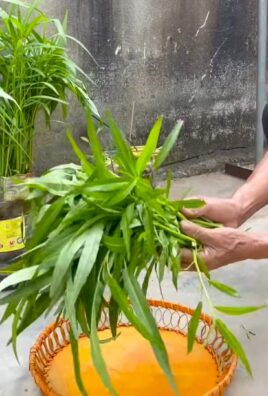
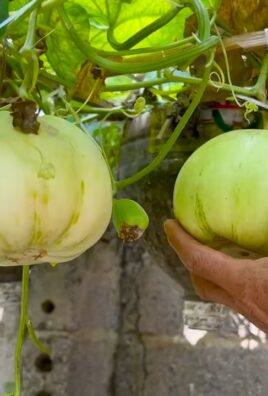
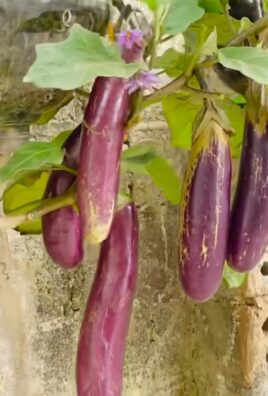
Leave a Comment